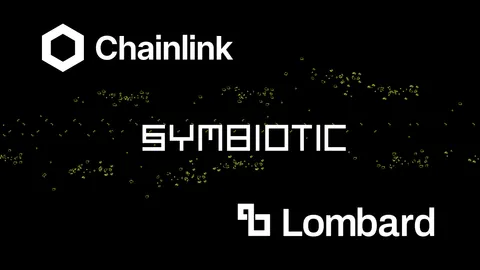Shared security has emerged as a powerful mechanism for aligning incentives and enhancing network security in blockchain ecosystems. While we've previously explored Symbiotic's core components in previous blog posts, one commonly underappreciated fact is that the flexibility of Symbiotic’s framework results in emergent entities.
Symbiotic: A Framework for Efficient Shared Security
At its core, Symbiotic provides a set of primitives that create immutable rails for parties to enter into alignment agreements without intermediaries. This framework creates a vast design space with room for multiple defined actors:
1. Collateral: The foundation, which can be any asset on nearly any chain.
2. Vaults: The flexible staking layer connecting collateral to networks.
3. Operators: Entities running infrastructure components for networks.
4. Networks: Service providers seeking decentralization.
5. Resolvers: Slashing managers and arbitration systems.
With these explicitly defined actors, Symbiotic is already incredibly powerful on its own. Networks gain efficiency in managing their security, with the ability to scale as needed while retaining sovereignty over their infrastructure. Symbiotic's secure framework enables network onboarding entities, such as liquid restaking tokens, to handle increased volume and facilitate rapid protocol decentralization. Furthermore, capital efficiency is significantly enhanced as it can be utilized across multiple networks simultaneously, maximizing its effectiveness.
Emergent Layers: Curators
While the defined roles are powerful on their own, the true power of Symbiotic lies in the interplay between these components, resulting in the emergence of new entities, such as curators. These curators leverage Symbiotic's modularity to manage, optimize, and provide transparency to the interactions between different components of the system, further enhancing the overall efficiency of the ecosystem as a whole.
Who Are Curators?
Currently, curators can take several forms:
Liquid Restaking Tokens (LRTs): These entities are experts in asset management. Liquid restaking teams handle many assets with detailed scoring frameworks. They excel in acquiring large amounts of stake, building dedicated communities, and creating valuable incentive systems to encourage restakers to provide economic collateral. Networks on Symbiotic can work with LRT teams to guide stake acquisition and maintain economic security.
Operators: Operators can also act as curators. Their expertise lies in operating many forms of infrastructure, industry-specific DevOps knowledge, scoring networks from both the economic and technical sides, and have deep experience in managing node redundancy and uptime. Networks can benefit from operator curation to develop best practices and ensure highly resilient systems.
Risk Managers and Research Entities: These curators focus on scoring and quantifying various risks within the ecosystem, helping restakers and networks make informed decisions. They can be applied research groups, consulting agencies, or even independent researchers. Their neutrality and broad scope ensures the overall security of the ecosystem while providing best practices for networks.
Liquid Staking Tokens (LSTs): Liquid staking teams have years of experience creating scoring frameworks and coordinating large operator sets, managing system upgrades, and integrating assets into the broader DeFi landscape. As curators, their expertise can help Symbiotic networks obtain the ideal operator set that suits their particular needs.
DAOs and Ecosystem Governance: Blockchain governance systems are highly robust decentralized coordination mechanisms. Having a diverse set of participants provides a dynamic and reactive set of voices that can continually curate the security profile of networks, such as collateral management, in a decentralized manner.
We anticipate the list to grow as Symbiotic matures and the restaking landscape increases in complexity.
The Future of Curation
As the Symbiotic ecosystem grows, we expect the role of curators to evolve. We may see the emergence of specialized curation platforms offering advanced tools for risk assessment and portfolio management. As Symbiotic expands to support more chains, curators could specialize in managing cross-chain security arrangements. The integration of AI and machine learning could optimize curation strategies, analyzing vast amounts of data to make real-time adjustments. We might witness the formation of decentralized curation DAOs, where communities collectively manage large pools of assets based on specific curation strategies.
Conclusion
The emergence of curators is a natural consequence of Symbiotic's flexible and modular design. As the ecosystem matures, curators optimize interactions between collateral, vaults, operators, networks, and resolvers. They create new value by enhancing risk management, improving system efficiency through transparency and scale, and facilitate more sophisticated use cases. Curators also play a crucial role in democratizing access to the benefits of shared security, enabling previously bespoke processes to be scaled to entire industries themselves. This increased accessibility, combined with curators' ability to create innovative products built on Symbiotic's primitives, accelerates the adoption and evolution of shared security as a whole from multiple angles.
As we continue to explore and expand Symbiotic's capabilities, we invite the community to get involved. Whether you're a potential curator, a network builder, an operator, or an enthusiast interested in shared security, there's a place in the ecosystem. Reach out to us here.



















